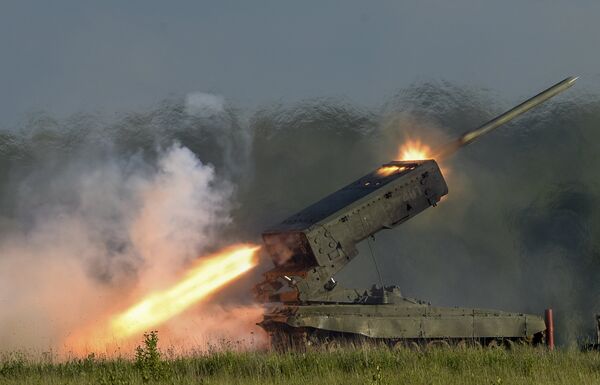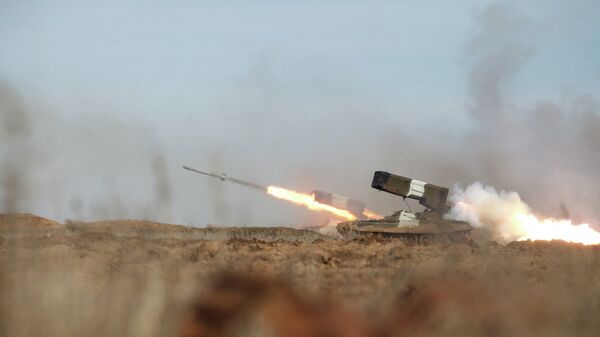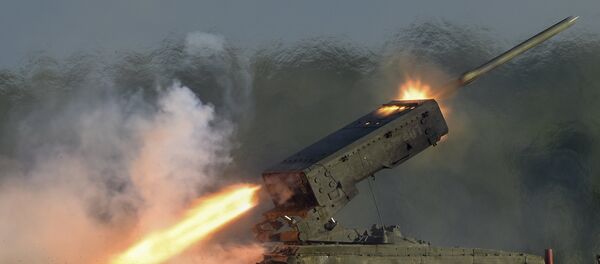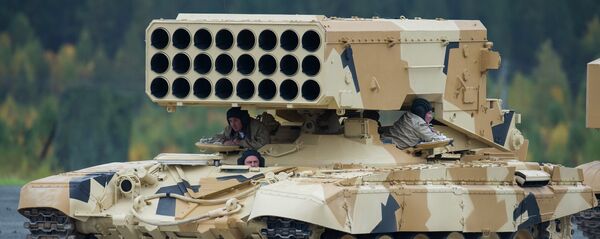On Wednesday, Izvestia reported that Splav Holding, a company specializing in the development of shells for tube-based artillery systems, was carrying out testing of a new extended-range shell for the TOS-1A together with the Defense Ministry.
A Defense Ministry source explained to the newspaper that "testing of the newest rockets is ongoing," and is expected to be completed "by the end of the year."
The current effective firing range of the existing TOS-1A system is 6 km. The new shell will increase that to 10 km, that is, by 40%. The improved range is expected to be achieved in part via a new fuel/explosive mixture inside the shell.
The system has gained fame around the world in recent years, having been used to high effect in Iraq and Syria to destroy terrorist fortifications, troops and armored vehicles.
Not a flamethrower in the traditional, WWII-era understanding of the term, the TOS is a flamethrower in the sense that it lobs thermobaric warheads into enemy-held areas, setting them ablaze.

Explaining the need for the new long-range projectile, Khlopotov noted that "the experience of modern warfare has shown that the increased range of anti-tank systems makes the TOS-1A highly vulnerable. For this reason, they must be withdrawn from the forward edge of the battle area."
"Here," the expert emphasized, "it is worth taking into account the experience of the ongoing military operations in Syria, where insurgents have extensively used captured Cornet [anti-tank] systems, which have a maximum range of 5 km, comparable to the range of the [TOS-1A] heavy flamethrower systems." In effect, the new shell will enable the tank to operate outside the range of enemy anti-tank systems.
The dead zone of the new 10 km rocket is 1.6 km, compared with one as low as 400 m for its predecessor. In other words, the older M0.1.01.04M projectile will definitely continue to be used, particularly in cramped combat environments. For longer range fire, Russia has the Smerch MLRS system, capable of firing between 70-90 km, (120 km with the 9M542 increased-range missile). That system has a dead zone of 20-25 km, meaning the TOS-1A, with or without its upgraded projectile, will definitely have its own niche.




